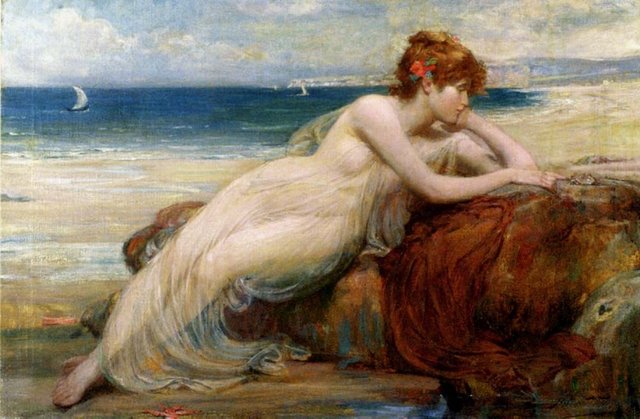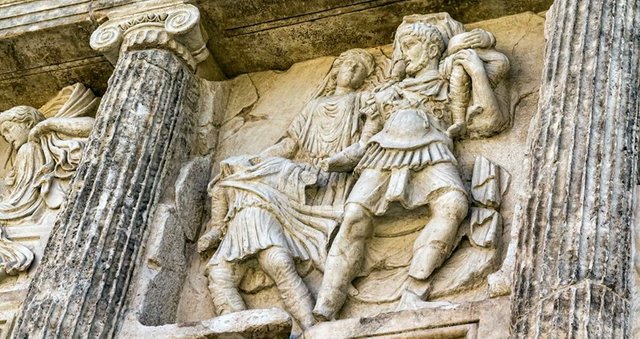The ancient city of Aphrodite, the goddess of love - Aphrodisias #9
Grati have greater historical significance, which can be arranged in four groups: Grati from stadium and theater, which are connected with showpieces; Grati from the market place, who let us look into the social stratification of the city and the professional life; Grati, who come from construction workers, and Grati, who are related to religious conicts. I would like to introduce some of this Grati as an example. A first complex includes drawings and texts relating to displays. They are mainly in the theater and in the stadium. These are seat reservations, drawings of actors and gladiators, their names - for example, the gladiator Thrax - or the names of the visitors. Underneath this is the rough drawing of a tightrope walker.
He is shown balancing on the rope with a staff in his hand. From tightrope there are hardly iconographic evidence, apart from two satyrs, which are shown on stretched rope in a house in Herculaneum. The tightrope dance was very popular at the time and even became a case for Roman jurisprudence. In the so-called digests, for example, the following legal case is dealt with: A slave who has learned rope dancing is sold by his master. At the behest of the old man - but under the new owner - the slave breaks his leg. Is the old gentleman who asked him or the new master responsible for it? The opinions of the lawyers on this are diverging. For us, this legal problem is important because it proves that slave owners had their slaves educated from early childhood to acrobats in order to profit from it. They sold the specialized slaves for a good price or rented them for various celebrations.
The depiction in the theater of Aphrodisias shows that such performances belonged to the program of the local festivals. On a pillar of the North Hall of the South Market of Aphrodisias are the sketches of two lions. The two animals have probably impressed a visitor to the gladiators and animal fights in the stadium. The details of the origin of the showmen or the comments on their performance or personality - for example, "Karmidianos is a tune" - give us a vivid insight into one of the most important aspects of the public and cultural life of imperial cities. A second large group of Grati consists of texts that point out the construction and function of buildings.
Anyone who has erected or financed buildings such as the temple or the theater, to whom the buildings were dedicated and under which governor they have been restored - is informed by the monumental "sacred and" building inscriptions ". But as the construction workers have organized their work, we do not learn from these texts. This is more likely to be explained by individual letters or numbers. For example, they are located behind a pillar or below a wall block. A characteristic example are twelve inscriptions painted in red paint on large blocks along the outer wall of the town hall, restored in the second century AD. It is always the same word: "PROBATA" 6. In three cases, the text is upside down. So it must have been written before the blocks were used to build the Town Hall.

